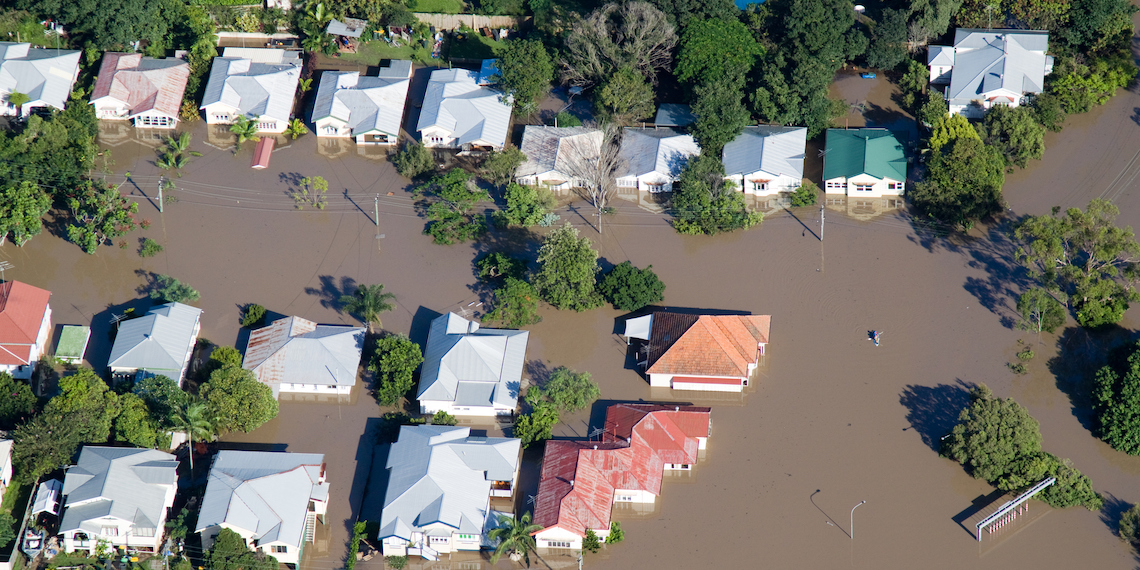New rapid water testing kit set to bolster sewage contamination response

Contamination of environmental waterways with human faecal matter is still a frequent occurrence in Australia, particularly following flooding events, but researchers have developed a fast, reliable and cost-effective test to identify sewage contamination to reduce response time.
Published in Environmental Science: Water Research & Technology, the La Trobe University research shows the Loop-mediated isothermal amplification (LAMP) test – a rapid DNA amplification technique – can be implemented onsite using a portable diagnostic machine.
Study lead and co-author, La Trobe University PhD candidate Meysam Khodaparast, said when recreational and environmental water is contaminated with human faecal matter, rapid and cost-efficient identification is critical in preventing waterborne pathogen outbreaks.
“Current tests require cold chain transportation to get the sample from the site to the lab, taking several days – which prevents rapid action by water authorities and timely public health decisions,” he said.
“The LAMP test is a simple and rapid molecular diagnostic test for water – it’s fast and doesn’t require scientific expertise to achieve an accurate result.”
The World Health Organisation (WHO) estimates the consumption of microbiologically contaminated water causes 485,000 diarrhoeal deaths globally each year (Drinking-water fact sheet, 2022).
Co-author of the study and Bio2Lab Director Dr Dave Sharley said that in Australia, the sewer network is separated from the stormwater network, however during storm events it is very common for stormwater to enter the sewer via broken pipes or illegal connections.
“Sewerage systems can then reach capacity releasing sewage back through private plumbing connections (toilets) or spill into rivers and creeks,” he said.
“In the Australian context, the concern of water pollution heightens during periods of heavy rain, especially when flooding occurs. The relatively low cost of the new tests will allow water authorities to increase their surveillance during sewer-spills.”
Given overflow spills can present a human health risk in recreational waters, Sharley said waiting three days for a sample test is not ideal and being able to test water quickly will allow water managers to manage spills more efficiently.
“This is likely to reduce costs associated with sewer spill clean-ups – machinery, equipment, etc. – and it can be running for only as long as it’s necessary, rather than waiting additional days for test results to come back from a lab”, he said.
Real-time results
One of the key benefits behind the rapid LAMP, DNA-based detection assay is its ability to help mitigate time-sensitive response to potential contamination events, Khodaparast said.
“It’s a very specific detection method that provides a real-time, accurate and reliable result. The method is simple, and does not require any complicated laboratory equipment. Therefore, it’s possible to conduct this assay in the field by non-expert technicians,” he said.
“The complicated DNA extraction method, which is required for current standard assays, uses qPCR, which many people now know about thanks to COVID-19. But this type of pre-analysis of DNA is not required with our assay.
“As the test can be implemented in the field, the sample collection and distribution to a laboratory is completely eliminated. There is no need to send samples for testing, which means it’s a lower-cost solution compared to regular PCRs.
“Using the small, portable, and battery-operated machine, the test can be done anywhere, even where electricity is not accessible.”
Generally, pathogen detection via DNA-amplification techniques are much faster than traditional culturing methods, Khodaparast said, with 24 to 48 hours required for culturing, and two to four hours required for qPCR.
“But LAMP is even faster. The results are ready in 30 minutes. Performing our LAMP is similar to Rapid Antigen Tests (RAT), in that you mix some solution with your sample and the rest will be done with the Instrument,” he said.
“Compared to the RAT, the LAMP is actually as sensitive and reliable as qPCR. So it provides an almost instant reading, like a RAT, but it is far more accurate.
“You can see the result with LAMP in real time as you watch the amplification curve on the screen, or you can wait for 20 minutes after you start the assay to see the interpreted result.”
Overcoming DNA purification
There were a couple of challenges involved in developing this approach, Khodaparast said, including overcoming issues with DNA purification, which is required for accurate detection.
“Sample purification or preparation for these methods, especially for environmental DNA detection, can be quite challenging, especially when you want a test to be quick and accurate,” he said.
“Usually DNA appears in very low concentrations within environmental water contexts. In some cases, it can be very difficult to purify DNA from environmental water samples.”
Khodaparast said he overcame this hurdle by optimising existing water filtering protocol.
“In this assay, the DNA of the indicator bacteria of human faecal pollution were purified using a simple protocol, which I explain in my study. I optimised a simple water filtering protocol for this assay,” he said.
“By optimising a simple buffer which helps to release the DNA of the bacteria into the solution, there is no longer a need to apply complex purification methods. This optimised protocol will likely also be able to be used with other similar pathogens, as well.”
Commercial partners Bio2Lab and GeneWorks supported the development of the LAMP test through an industry-based PhD scholarship that was supervised by Professor Travis Beddoe at La Trobe University, and Khodaparast said the test in now commercially available through Bio2Lab Pty Ltd.
“I am also working on designing assays for other pathogens at the moment, which will hopefully be ready soon. I am going to optimise another LAMP assay to help detect other microbiomes more accurately,” he said.
“We are still facing issues with illnesses caused by water contamination, both in Australia and internationally. It’s very important that we keep working towards faster and more effective detection.”

